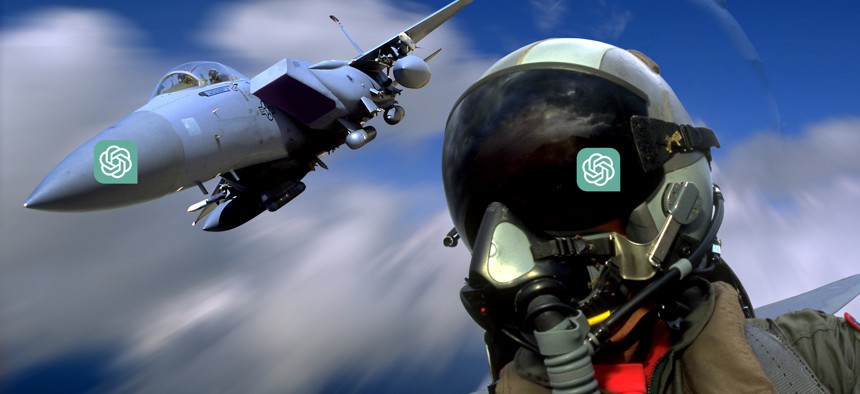LAUREN C. WILLIAMS

Can an AI-fueled chatbot help navigate the Defense bureaucracy? Or improve how the Pentagon shares information? The Air Force’s outgoing chief information officer thinks it just might.
The Pentagon’s legacy of bureaucracy and spotty Wi-Fi are well documented. But what if an AI-fueled chatbot could help make things easier?
Lauren Barrett Knausenberger said that she’s been playing around with ChatGPT, the latest incarnation of the chatbot released by OpenAI.
“I think that there is a lot of benefit to the DOD of being able to find information, of being able to find who's in charge, of being able to rapidly pull together information in general because we do waste a lot of time like with taskers, for instance,” Knausenberger said on Tuesday during a Billington Cybersecurity event in Falls Church, Va.
“There's no reason why ChatGPT can't respond to taskers and take away some of the very heavy knowledge-management work of finding, okay, ‘Who are the three action officers across the department that have these different pieces' and pulling it together? So there's a lot of power there that we can harness here in the near future.”
Knausenberger recently announced she would soon step down as the Air Force’s deputy CIO, a job that followed her stints as the service’s chief transformation officer and cyberspace innovation director.
Before leaving her post in June, she said she wants to wrap up a couple of initiatives, including simplifying—and automating—how the Air Force secures its endpoint devices such as phones, computers and tablets.
“We still have these multiple images that we deploy throughout, and we're up to about 99% of being able to patch our endpoints in an automated way,” as part of the Air Force’s zero-trust endpoint solution, Knausenberger said.
“That sounds really simple, but when you're dealing with multiple firewalls and PEO systems, it's actually pretty wild. So I want to get us a few more nines in there and get us to completely automated endpoints and on our way to device-for-life,” where users are issued a piece of equipment and keep it until it’s time for a new one.
The Air Force is also hoping to streamline its identity, credentialing, and access management, or ICAM, starting with its dozens of financial and auditing systems by 2025.
“It's really about making sure that all of our financial feeder systems, anything that touches our financial audit data, has the identity services in place,” she said. The Air Force aims to bring its various identity services “together along one tool stack” that can run all the necessary applications.
Knausenberger said the service is also trying to improve connectivity in the Pacific region, working with the Defense Information Systems Agency.
“We are sending too much traffic back to the United States, which, you know…I think we all know, laws of physics. If you send something that far and make it come back, it's gonna be slower than if you keep it in region,” she said.
“We actually do have two paths that we're exploring right now, again with DISA, to just kill that latency for good and that also ties into our zero trust right now.”
Knausenberger said she hopes to reveal a solution “before I walk out the door.”
No comments:
Post a Comment